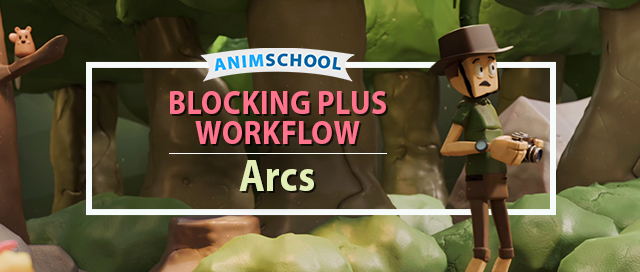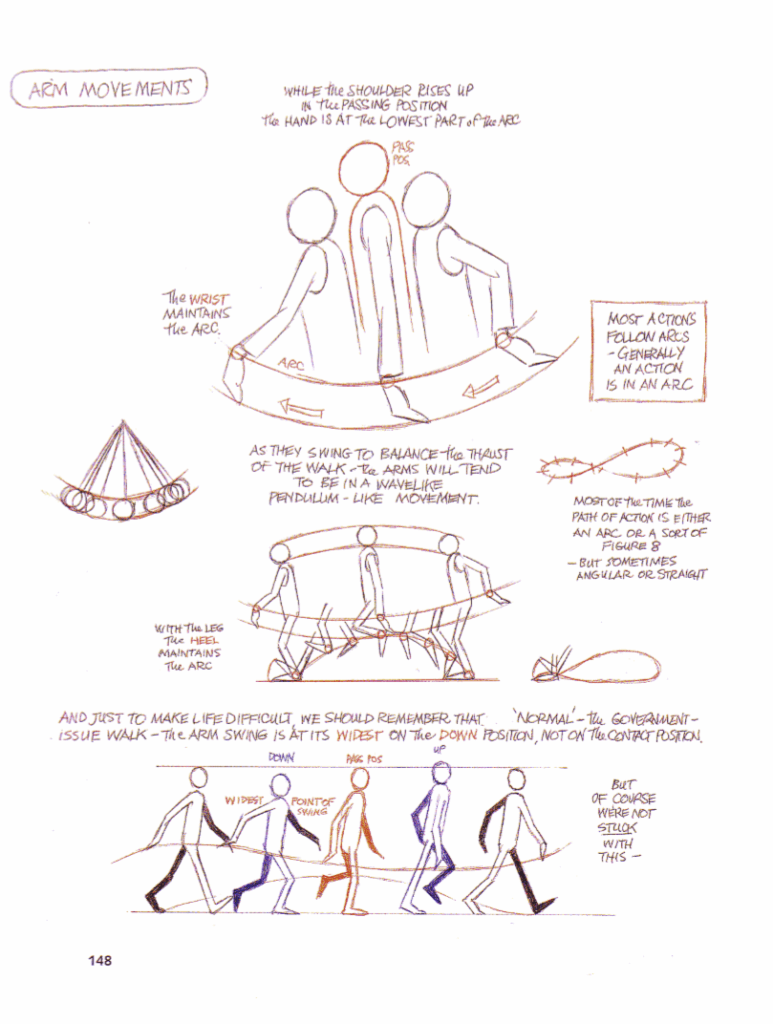
Once an animation starts to feel right, it’s easy to move on. However, that’s actually the perfect time to dig in and refine. During blocking and splining, arcs might be roughed in or implied, but in the polish phase, they need to be made intentional. If something feels off in your shot—even if you can’t articulate why—chances are it has to do with a broken or inconsistent arc. In this clip from a live AnimSchool lecture, instructor Jean-Luc Delhougne demonstrates how to use arcs to take your blocking to the next level.

A good place to start is with the head and spine. These parts often reveal arc issues because they tend to move with subtle complexity. If the head suddenly changes direction over a few frames or shifts too quickly between poses, it can break the flow and feel visually jarring. The key is to step through the animation frame by frame and examine the head’s motion across time. Often, the fix involves selecting the head, neck, and spine controls together and nudging them to form a more continuous arc. You’re not adding frames—you’re adjusting spacing and orientation to reinforce the shape of the motion. The result is a smoother, more intentional line of action through the upper body. The head no longer pops or feels disconnected from the rest of the movement.

Overlap also plays a role in arcs. If everything moves at once—especially in vertical actions—the motion can feel stiff. For example, if the head rises with the body too quickly during an upward movement, the arc may technically be there, but the lack of overlap makes it feel forced. Slowing the head’s rotation slightly or delaying its path just a bit can help reintroduce the feeling of follow-through and drag, which not only improves timing but also enhances the arc visually.
Sometimes an arc exists but lacks clarity due to poor spacing. One frame might be too far off the path, causing a visual pop. The solution isn’t always to add more keyframes but to redistribute what’s already there. This is where simple tools like moving controls by single pixels (using something like Alt + arrow keys) can be invaluable. These tiny shifts can help smooth out a curve without affecting the depth or creating messy curves in the graph editor. It’s a low-impact way to bring spacing and silhouette under control when things feel close but not quite there.
This is the essence of polishing animation arcs: noticing the small things that don’t quite sit right, identifying whether it’s a path, a spacing issue, or a lack of overlap, and making small, thoughtful adjustments. The arcs guide the eye, control rhythm, and anchor poses in space. During polish, refining arcs should be as important as refining timing or easing. Don’t wait until something looks broken to address them; the best results come from being proactive and observant. If something feels off, it’s often a broken arc waiting to be cleaned up.

Watch the full clip from an AnimSchool lecture here:
At AnimSchool, we teach students who want to make 3D characters move and act. Our instructors are professionals at film and game animation studios like Dreamworks, Pixar, Sony Pictures, Blizzard & Disney. Get LIVE feedback on your Animation from the pros. Learn more at https://animschool.edu/

Leave a Reply